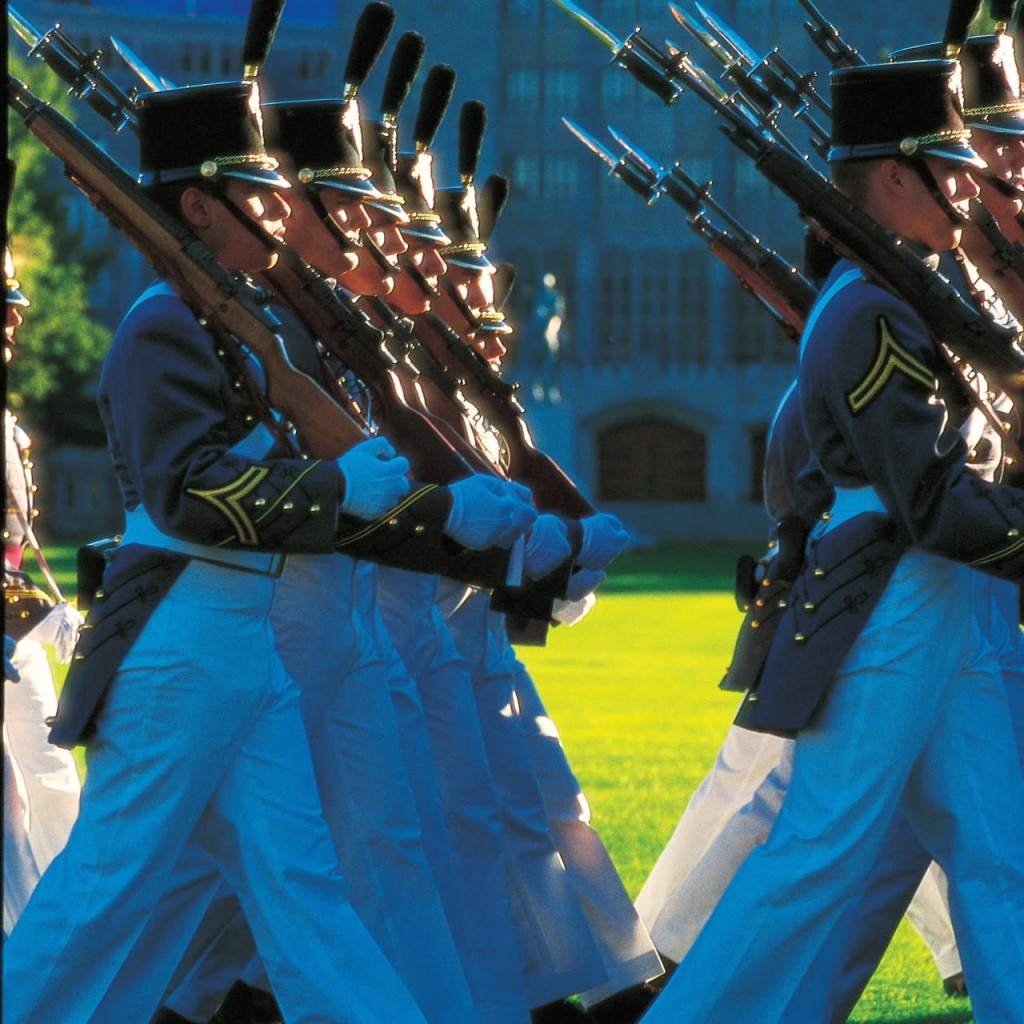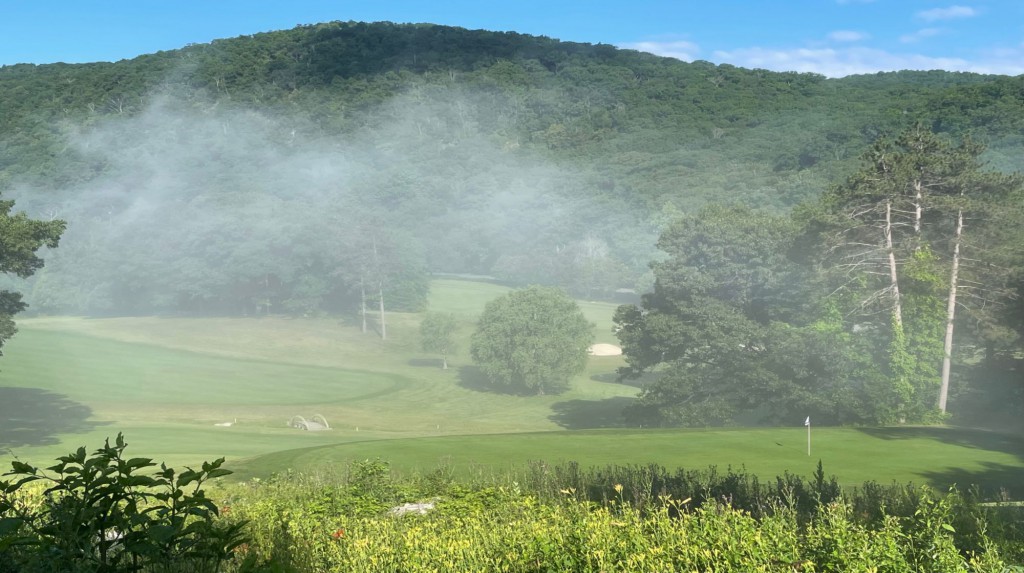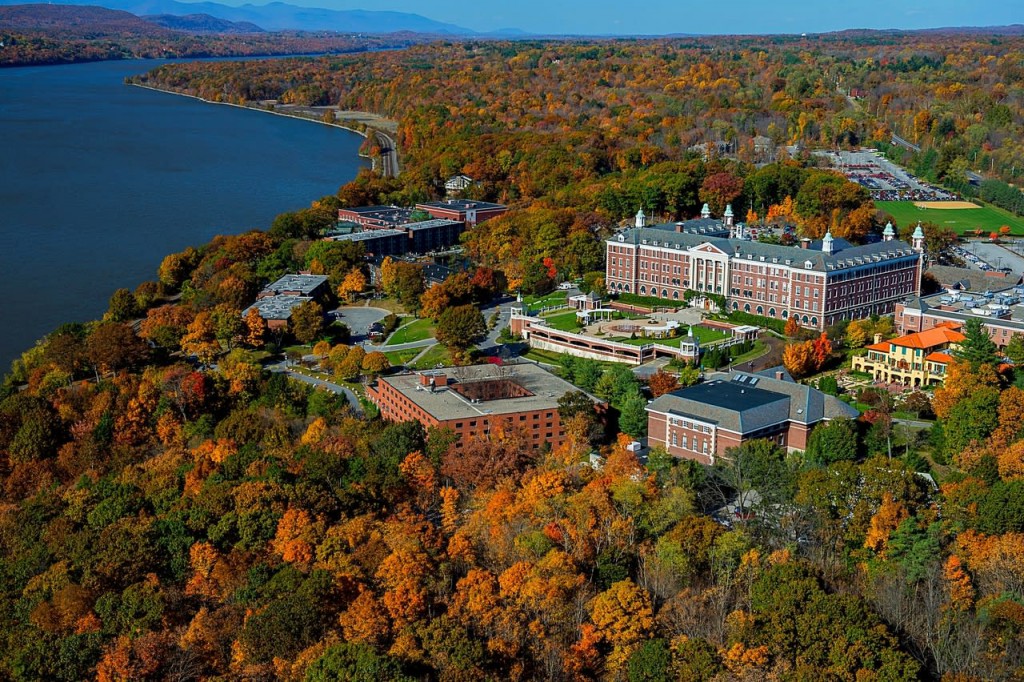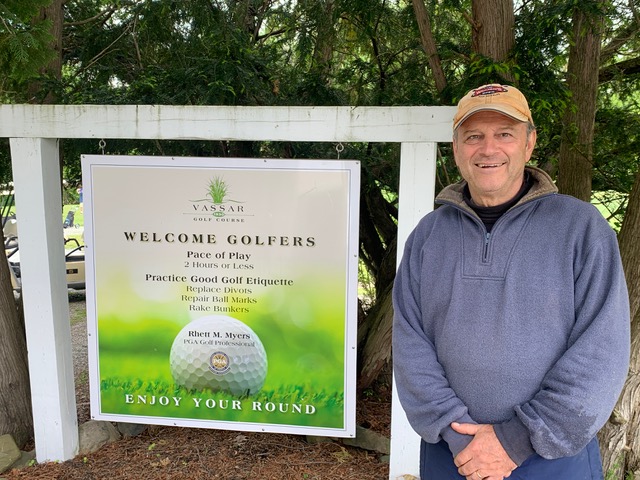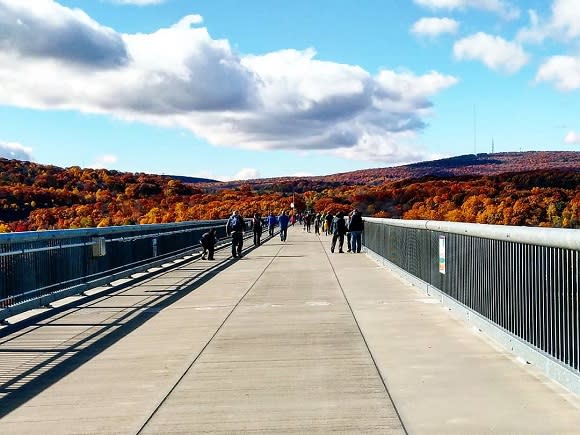Visiting West Point and New York’s Hudson River Valley were part of our travel plans when my cousin’s son played linebacker for the Army’s football team several years ago. We planned to attend a home game at West Point. Unfortunately, when the pandemic reared its ugly head, that trip, like so many others, was canceled. (Now graduated, that son plays on special teams for the NFL’s Carolina Panthers.)
With more time and planning, we rescheduled the trip this past May, which was a delight. Here are some of the highlights of the week:
West Point: The setting, the facilities and the campus are beautiful and captivating. We booked the official bus tour well in advance because it’s the best way to efficiently receive an informed overview of this famed Military Academy, the nation’s oldest continuously occupied military post, established in 1802. The bus tour lasted 75 minutes and had several stops around the main campus. It was enhanced by having an experienced guide with theatrical and public speaking experience. His storytelling knowledge and skills were excellent.
We also allotted time for the well-appointed West Point Visitors Center, home to the West Point Experience exhibit with its interactive, multi-media walk-thru, the Army West Point Gift Shop and the Visitor Control Center. Next to the Visitors Center is the West Point Museum. This must-see gem is the oldest federal museum in the U.S. It’s also the country’s oldest and largest military museum, with collections covering all facets of military history. History buffs could spend a whole day here. I was particularly enthralled by the exhibit devoted to large weaponry—including a WWI tank and cannon and D-Day murals—found on the museum’s lowest level.
Naturally, I couldn’t resist seeing the West Point Golf Course, established in 1948, where I met Head Golf Coach Chad Bagley. Despite its relatively short length (maxing it out at 6400 yards for Army matches), this course is a handful due to its rolling topography more suited for a ski area, which it is during the winter. Uneven, sidehill, and downhill lies and a slew of elevated changes are prevalent here, adding a stiff challenge for shotmaking and scoring. Designed by Robert Trent Jones, West Point GC boasts scenic, woodsy corridors and greens with lots of movement. Says Bagley: “By today’s standards, it may be short, but this course requires special attention off the tee where an iron is often the smart club. It’s our home, so we’re grateful to be here.”
Visit: www.westpoint.edu and www.golfatwestpoint.com
Culinary Institute of America (CIA): Dining at a memorable restaurant is often a highlight during travels and holidays. Inside its flagship campus in Hyde Park, NY, the CIA delivered on that score and much more. It’s the premier private culinary college in the U.S., arguably worldwide, and overlooks the Hudson River. Founded in 1946 in New Haven, Connecticut, the school purchased its current property from the Jesuit religious order in 1970. We knew enough about the CIA to plan our visit months in advance, including booking the entertaining and informative “The CIA Experience—Taste, Learn, Tour.” Lasting an hour, this offering provides an overview of the college, its curriculum, and its student body (around 3,000) while dishing up an interactive demonstration on the art and science of taste. Current CIA students ably lead all.
Pardon the analogy, but the tour served as a fitting appetizer to the main course of our visit, dinner at American Bounty, one of four restaurants on campus, in addition to a bakery and brewpub. It specializes in farm-to-table and regional cuisine with a casual and cozy ambiance. Don’t consult Yelp, Trip Advisor, or even your cousin’s son about American Bounty. Just make a reservation and then sit back and enjoy. The atmosphere and food were excellent, and the service was equally good. The best part was knowing the preparation and presentation of our food and drink were done by aspiring students from all over the world under the guidance of trained and experienced faculty, many of whom are Master Chefs. We took time to get to know our servers—at least five or six—and heard their career goals and dreams. Several wanted to eventually open their own restaurants, while others just looked forward to graduating and finding a good job. Such notable CIA alums as Anthony Bourdain, Anne Burrell, and Roy Choi would be rightfully proud.
Visit: www.ciachef.edu
Vassar College and Golf Course: Thanks to Rhett Myers, the savvy manager and operator of this campus nine-holer, Vassar GC is a surprising and unlikely diversion from the world of manicured and overwatered golf courses. For Michiganders, it may remind them of the appeal of Wawashkamo GC on Mackinac Island, one of the state’s oldest active courses, which celebrated its Centennial in 1998. Like Wawashkamo, Vassar is more about its history, charm, and nostalgic golf experience than lush fairways, yawning bunkers, and fast, rolled greens. Besides, it’s inexpensive and is highly walkable for most players, including area residents and students. A member of the NY Section of the PGA, Myers has leased the course from the college for 15 years and figures he’ll continue for another five before he retires.
Vassar GC opened in 1930, and some speculate Donald Ross may have designed it. However, Myers could not find any documentation because salient campus records were lost many years ago in a building fire. Nonetheless, the layout has some latent Ross features, while another “Seven Sisters College,” Mount Holyoke, was the handiwork of the Scottish master.
The course has a yardage of 2514 yards with a par of 34, with two par-threes. There are a dozen bunkers but no water hazards. Due to maintenance costs and staff limitations, course conditions are rustic. The golf experience is more akin to taking a hike… with clubs. Myers doesn’t apologize for what Vassar delivers to its understanding and appreciative clientele. And he has a ready rationale for justifying its rough terrain but with decent putting surfaces.
“I’d rather play a course with good greens and bad fairways because the ball should be in the air most of the time anyway,” said Myers with a laugh. All of the greens are irrigated, but only the ninth fairway is watered due to its proximity to Vassar’s Fieldhouse, which was renovated in 1999.
I spoke to several “regulars” in the parking lot after our pleasant time with the affable Mr. Myers. One summed up Vassar’s appeal: “It’s not hard, it’s a nice walk and only takes 90 minutes to play.”
Hmmm… I wonder if it appealed to Anthony Bourdain, who attended Vassar College for two years before finding his calling later at the CIA. Visit: www.vassargolfcourse.com
Note: Vassar College is worth a visit in and of itself. It’s picturesque, leafy, compact, and full of architectural gems. Noteworthy stops include the Thompson Memorial Library, the Chapel, and especially the Frances Lehman Loeb Art Center. “The Loeb” has an impressive permanent collection—with names like Bacon, Calder, Hudson River School artists, O’Keeffe, Pollock, Picasso, Rembrandt, and more—that rivals more prominent and older art museums.
Visit: https://www.vassar.edu/visit
Other stops: History buffs should visit the Springwood estate of Franklin D. Roosevelt, a National Historic Site in Hyde Park, and the adjoining Franklin D. Roosevelt Presidential Library and Museum. A short drive away is the Eleanor Roosevelt National Site. And to the north along the Hudson is another National Historic Site, the Vanderbilt Mansion and Estate, a preserved relic of the Gilded Age and its conspicuous displays of wealth. There are four historical stops, all close to one another….In Poughkeepsie, one can’t pass up the Walkway Over the Hudson, a steel cantilever bridge spanning the Hudson River between Poughkeepsie, New York, on the east bank and Highland, New York, on the west bank. The former railroad bridge, damaged by fire in the ‘70s, was reopened in 2009 as a pedestrian walkway as part of the new State Historic Park. It’s now the world’s longest elevated bridge, with marvelous views of the Hudson River and its surroundings. Visit www.walkway.org
Other golf options: The Hudson River Valley has numerous attractive courses at various prices. Locals particularly favor College and Hill McCann Memorial in Poughkeepsie and Dinsmore in Staatsburg, farther north. Dinsmore has an intriguing backstory, one akin to the Vanderbilt Mansion. Its origin begins in 1893 as a private 9-hole course, an amenity to the Gilded Age estates of the Dinsmore, Hoyt and Mills families. As such, it claims to be the country’s third-oldest golf course. When that land was donated to the NY State Park system, Dinsmore went public and became the south nine when the layout was expanded to 18 holes in 1962.
On the private club side, one would be lucky to know a member of Hudson National, a Tom Fazio design that delivers on the “wow factor,” as it sits on dramatic bluffs high over the Hudson River Valley. It’s located about a 30-minute drive south of West Point GC.
photos courtesy of West Point, Culinary Institute, New York Tourism Office

